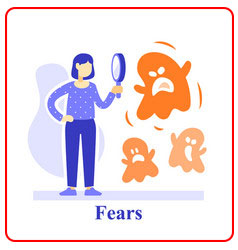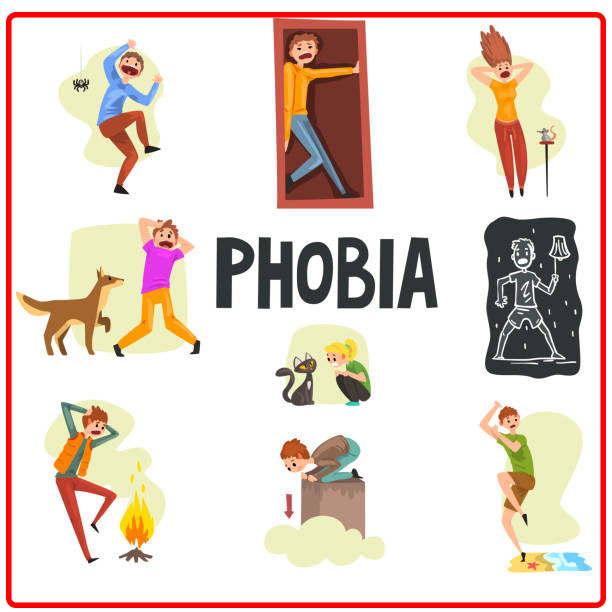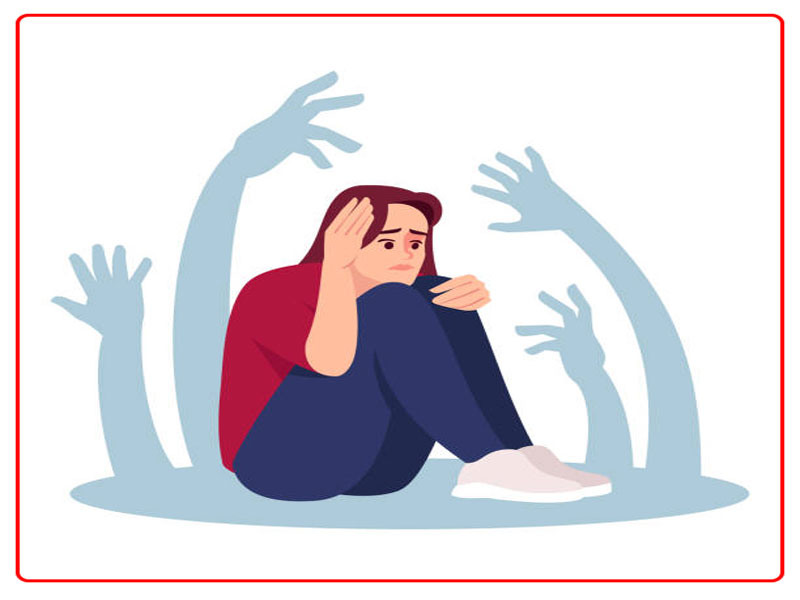In fact, a phobia is a reaction or fear that is excessive and irrational. If you have a phobia, you will experience excessive feelings of panic when confronted with your source of fear. People can be afraid of certain places, situations or objects. Unlike stress and anxiety disorders, phobias must be related to a specific source. The effects of phobias can range from annoying to debilitating. People with different types of phobias know that their fears are irrational, but they can do nothing. Such fears can disrupt a person’s daily activities such as work, school, family and personal relationships. Ibn phobias can even cause a person to change their place of residence and avoid many social periods and activities.
Causes of phobia
One of the causes of phobias is the genetics of people and their environment. Children who have a loved one with phobias or anxiety disorders are at higher risk for developing phobias than other children. Traumatic events, such as drowning, can also lead to phobias. Being in confined spaces, high altitudes, or insect bites are also the most common causes of phobias. Of course, keep in mind that people who experience stress, anxiety, and depression in their lifetime, or who are genetically predisposed to these conditions, are also more likely to have phobias. People who are in certain medical conditions or who need to take constant care of their health also have a higher risk of developing phobias. It is very common for people to develop different types of phobias after brain injuries. Substance abuse and depression are also directly related to this. Of course, keep in mind that phobias are very different from serious mental illnesses such as schizophrenia. In schizophrenia, for example, people develop visual and auditory hallucinations. It may be illogical, but people with phobias do not fail reality tests. In addition to the above, gender and economic status also affect phobias. For example, women are more likely to develop animal phobias, and men are more likely to develop phobias such as dental phobias. Also, children and people who are economically disadvantaged are more likely to develop social phobias.

Symptoms of phobia
The most common and debilitating symptom is panic attacks. Features of panic attacks include:
- High heart rate and heart rate
- Shortness of breath
- Speech or inability to speak
- Dry mouth
- stomach ache
- nausea
- Hypertension
- Feeling of pain or tightness in the chest and lungs
- Feeling suffocated and unable to breathe properly
- Dizziness or headache
- Increased sweating intensity
Types of phobias
There are so many types of phobias that it is impossible to name them all at once. Some of them seem common and some of them seem very strange and unbelievable. Here are some common types of phobias:
Agoraphobia
agoraphobia is the fear of places or situations from which people cannot escape. People with this type of phobia are afraid of being overwhelmed. Or are trapped outside in a situation where they can not return home. They often avoid social situations and try to stay at home as much as possible. Many people with agoraphobia are afraid of having panic attacks outside their home and safe area. People with chronic health problems are afraid of getting an emergency situation in public places or where there is no help.
Social Anxiety Phobia
Social phobia is also known as social anxiety disorder. This phobia is related to social situations and can lead to isolation. This type of phobia can develop so severely that the person with the phobia is even afraid to order food at a restaurant or answer the phone.
Glossophobia
This type of phobia is a condition in which the speaker experiences fear and anxiety in front of others. People with this phobia are terrified even when thinking about speaking in front of a crowd and even show physical symptoms.
Acrophobia
People with this type of phobia are very afraid of mountains, stairs, tall buildings, and floors. Physical symptoms of this type of phobia include dizziness, sweating, or loss of consciousness.

Aviophobia
Fear of flying and getting on a plane.
Hemophobia
Fear of seeing blood or serious injury. A person with this type of phobia becomes unconscious when they come in contact with their own blood or that of another person.
Dental phobia (Dentophobia)
In this type of phobia, the person is afraid of any actions related to dentistry. In general, it can be said that this phobia occurs after having a bitter and painful experience in dentistry, but if it prevents periodic check-ups and dental care and treatment at the right time, it is very harmful.
Nyctophobia
This is for fear of the night or darkness. Many people have this fear as a child and it may go away over time, but if it is always with the person during adolescence and youth, it is a phobia and needs treatment.
Treatment of various phobias
To treat different types of phobias, people should first consult a good and experienced psychologist. According to the psychologist, your treatment can be a combination of counseling sessions, relaxation exercises, behavior therapy and medication. The choice of behavior therapy depends on the diagnosis of your psychologist. One of the methods is to be in a controlled environment of fear. You should also consult your psychologist at the earliest opportunity to use medication.


